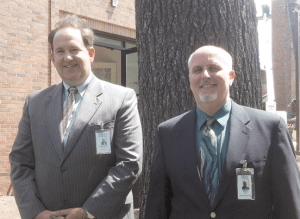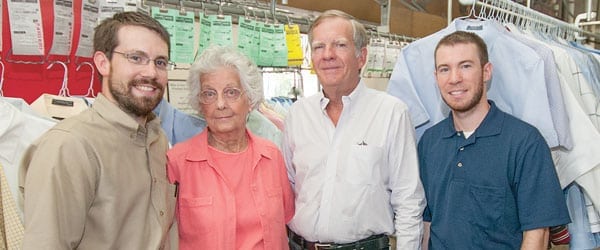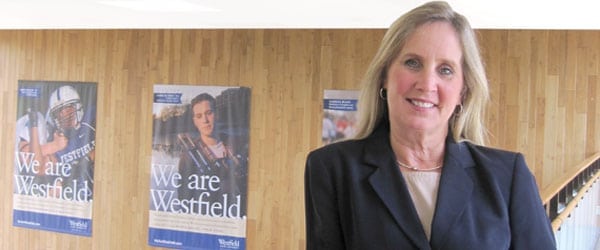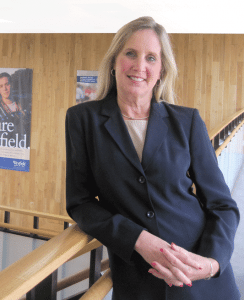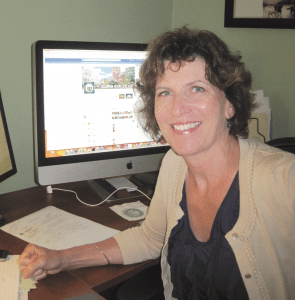The following real estate transactions (latest available) were compiled by Banker & Tradesman and are published as they were received. Only transactions exceeding $115,000 are listed. Buyer and seller fields contain only the first name listed on the deed.
FRANKLIN COUNTY
ASHFIELD
1734 Baptist Corner Road
Ashfield, MA 01330
Amount: $385,000
Buyer: Carl Bravmann TR
Seller: Stewart F. Walker
Date: 06/28/13
243 Main St.
Ashfield, MA 01330
Amount: $143,800
Buyer: Thomas J. Miner
Seller: Stockwell, Laura V., (Estate)
Date: 06/24/13
863 Spruce Corner Road
Ashfield, MA 01330
Amount: $145,000
Buyer: Daniel K. Ziegler
Seller: Theodore Bruland IRT
Date: 06/28/13
CONWAY
65 South Hill Road
Conway, MA 01341
Amount: $374,000
Buyer: Michael H. Merritt
Seller: David F. Guild
Date: 06/28/13
DEERFIELD
23 Beaver Dr.
Deerfield, MA 01373
Amount: $265,000
Buyer: Marit F. Harney
Seller: Jacqueline Urban
Date: 06/28/13
4 Braeburn Road
Deerfield, MA 01373
Amount: $124,250
Buyer: Kara R. Jurkoski
Seller: FNMA
Date: 06/17/13
9 Conway St.
Deerfield, MA 01373
Amount: $170,000
Buyer: Laura A. Kuzdeba
Seller: Sharyn A. Paciorek
Date: 06/14/13
45 King Philip Ave.
Deerfield, MA 01373
Amount: $338,000
Buyer: Burnley R. Jaklevic
Seller: Daniel Dewey
Date: 06/17/13
16 Lee Road
Deerfield, MA 01373
Amount: $365,000
Buyer: Cassy A. Cohoon
Seller: Richard W. Burke
Date: 06/21/13
138 North Hillside Road
Deerfield, MA 01373
Amount: $135,000
Buyer: Francis G. Sobieski
Seller: Julia A. Griswold
Date: 06/24/13
19 Stage Road
Deerfield, MA 01373
Amount: $219,500
Buyer: James W. Laughner
Seller: Daniel J. Fuqua
Date: 06/14/13
GILL
386 Main Road
Gill, MA 01354
Amount: $200,000
Buyer: Michael A. Travisano
Seller: Joseph T. Rafferty
Date: 06/21/13
GREENFIELD
441 Adams Road
Greenfield, MA 01301
Amount: $147,000
Buyer: Shane M. Powell
Seller: Carpenter, Dorothy I., (Estate)
Date: 06/14/13
219 Barton Road
Greenfield, MA 01301
Amount: $225,000
Buyer: Whitney Russell
Seller: Stephen A. Garanin
Date: 06/26/13
184 Chapman St.
Greenfield, MA 01301
Amount: $162,700
Buyer: Heidi Garfinkel
Seller: Michael J. Winn
Date: 06/21/13
17 Chestnut Hill
Greenfield, MA 01301
Amount: $260,750
Buyer: Jesse R. Duquette
Seller: Norman A. Welch
Date: 06/27/13
68 Crescent St.
Greenfield, MA 01301
Amount: $265,000
Buyer: Michael S. Penn-Strah
Seller: John H. Reese & Joni Denn TR
Date: 06/26/13
70 Fort Square
Greenfield, MA 01301
Amount: $149,900
Buyer: Jennifer A. Mielinski
Seller: Sharon L. Mendyk
Date: 06/14/13
34 Grove St.
Greenfield, MA 01376
Amount: $140,000
Buyer: Louis W. Peck
Seller: Wayne P. Chapln
Date: 06/28/13
31 West St.
Greenfield, MA 01301
Amount: $139,000
Buyer: Robert C. Catlin
Seller: Charles Chandler
Date: 06/28/13
44 Wildwood Ave.
Greenfield, MA 01301
Amount: $182,050
Buyer: Mark A. Shulenburg
Date: 06/21/13
LEYDEN
37 Alexander Road
Leyden, MA 01337
Amount: $650,000
Buyer: James Schoolenberg
Seller: Greenfield Savings Bank
Date: 06/28/13
MONTAGUE
24 Avenue C
Montague, MA 01376
Amount: $151,000
Buyer: James R. Clapp
Seller: Lisa M. Sakowicz
Date: 06/28/13
8 Avenue C
Montague, MA 01376
Amount: $167,000
Buyer: Janet L. Rendall
Seller: Gail M. Findlay
Date: 06/28/13
67 Crocker Ave.
Montague, MA 01376
Amount: $170,000
Buyer: Charles E. Dodge
Seller: Juraszek, Stanley M., (Estate)
Date: 06/28/13
87 East Taylor Hill Road
Montague, MA 01351
Amount: $255,000
Buyer: Jennifer R. Atlee
Seller: Norma L. Jablonski
Date: 06/27/13
25 H St.
Montague, MA 01376
Amount: $180,000
Buyer: Jaime A. Young
Seller: Richard A. Young
Date: 06/14/13
44 Oakman St.
Montague, MA 01376
Amount: $145,900
Buyer: Megan Dery
Seller: Mary L. Blumberg
Date: 06/28/13
48 Taylor Hill Road
Montague, MA 01351
Amount: $206,300
Buyer: Charles Y. Edwards
Seller: Clarkson S. Edwards
Date: 06/13/13
30 Union St.
Montague, MA 01351
Amount: $197,900
Buyer: Holly E. Anderson
Seller: James C. Lawlor
Date: 06/26/13
NEW SALEM
64 North Spec Pond Road
New Salem, MA 01355
Amount: $134,500
Buyer: Rene Arsenault
Seller: Joseph S. Bellantoni
Date: 06/27/13
NORTHFIELD
416 Millers Falls Road
Northfield, MA 01360
Amount: $277,000
Buyer: Bradley K. Woodward
Seller: Lynn M. Bassett
Date: 06/13/13
15 North Lane
Northfield, MA 01360
Amount: $225,000
Buyer: Joseph W. Bedard
Seller: Jane L. Abbott
Date: 06/14/13
750 Pine Meadow Road
Northfield, MA 01360
Amount: $152,000
Buyer: Kyle F. Pelis
Seller: Joseph E. Burt
Date: 06/28/13
804 Pine Meadow Road
Northfield, MA 01360
Amount: $225,000
Buyer: Sean J. Conlon
Seller: MW&MW Realty LLC
Date: 06/19/13
ORANGE
13 Howe St.
Orange, MA 01364
Amount: $117,318
Buyer: FNMA
Seller: William K. Whitmore
Date: 06/21/13
138 Main St.
Orange, MA 01364
Amount: $220,000
Buyer: Kevin M. McCann
Seller: Stephan E. Thompson
Date: 06/20/13
11 Memorial Dr.
Orange, MA 01364
Amount: $140,450
Buyer: Scott W. Green
Seller: Linda S. Whitesone
Date: 06/21/13
SUNDERLAND
121 N. Main St.
Sunderland, MA 01375
Amount: $655,000
Buyer: North Main 121 RT
Seller: Michael R. Skibiski
Date: 06/27/13
WARWICK
77 Hastings Heights Road
Warwick, MA 01378
Amount: $153,500
Buyer: Shawn M. Gonynor
Seller: Decoste, Stanley J., (Estate)
Date: 06/21/13
525 Old Winchester Road
Warwick, MA 01378
Amount: $134,000
Buyer: Michael Cloukey
Seller: US Bank
Date: 06/17/13
WENDELL
281 Jennison Road
Wendell, MA 01379
Amount: $250,000
Buyer: Wayne Rodrigues
Seller: Peter A. Redington
Date: 06/27/13
21 Plain Road
Wendell, MA 01379
Amount: $170,000
Buyer: Patrick R. Taylor
Seller: Todd D. Muller
Date: 06/26/13
HAMPDEN COUNTY
AGAWAM
335 Adams St.
Agawam, MA 01001
Amount: $245,000
Buyer: Donna M. Ferraiolo
Seller: Dennis M. Roberts
Date: 06/27/13
15 Allison Lane
Agawam, MA 01030
Amount: $293,000
Buyer: Richard J. Zina
Seller: Lance B. Dillard
Date: 06/21/13
105 Autumn St.
Agawam, MA 01001
Amount: $250,000
Buyer: Ryan J. Wood
Seller: Thomas W. Foley
Date: 06/21/13
47 Barbara Lane
Agawam, MA 01030
Amount: $284,900
Buyer: Amy L. Bishop
Seller: Shannon L. Page
Date: 06/25/13
60 Campbell Dr.
Agawam, MA 01001
Amount: $179,000
Buyer: Anthony T. Depalo
Seller: Cori A. Verteramo
Date: 06/17/13
55 Forest Ridge Lane
Agawam, MA 01001
Amount: $317,500
Buyer: Carol R. Lapolice
Seller: Jaclyn Pendergast
Date: 06/28/13
29 Highland Ave.
Agawam, MA 01001
Buyer: David M. Hadley
Seller: John J. Crean
Date: 06/21/13
50 Kanawha Ave.
Agawam, MA 01001
Amount: $120,000
Buyer: Gregory Ruge
Seller: FNMA
Date: 06/26/13
69 Line St.
Agawam, MA 01030
Amount: $265,000
Buyer: Peter Privedenyuk
Seller: Pavel Kuzmenko
Date: 06/28/13
1084 Main St.
Agawam, MA 01001
Amount: $208,000
Buyer: Ryan A. Lottermoser
Seller: Karen Marceau
Date: 06/19/13
46 Main St.
Agawam, MA 01001
Amount: $145,000
Buyer: Edward R. Dearborn
Seller: Michael Torcia
Date: 06/17/13
32 Maple Meadows Lane
Agawam, MA 01001
Amount: $370,000
Buyer: Jeffrey Kowarsky
Seller: FNMA
Date: 06/26/13
16 Morgan St.
Agawam, MA 01001
Amount: $158,000
Buyer: Joseph A. Bshara
Seller: Kelly Wilson
Date: 06/27/13
326 N. West St.
Agawam, MA 01030
Amount: $177,000
Buyer: Robert P. Ollari
Seller: Vincent L. Palange
Date: 06/18/13
23 Pembroke Lane
Agawam, MA 01001
Amount: $369,900
Buyer: Van Q. Nguyen
Seller: Alicemae V. Bell
Date: 06/19/13
76 Red Fox Dr.
Agawam, MA 01030
Amount: $220,000
Buyer: Kristy Ritson
Seller: Christina L. Trolio
Date: 06/27/13
40 Redwood Dr.
Agawam, MA 01001
Amount: $215,000
Buyer: Emmi Chaban
Seller: Beryl A. Robinson
Date: 06/28/13
71 Ridgeview Dr.
Agawam, MA 01030
Amount: $260,000
Buyer: Jennifer D. Dillard
Seller: Donald J. Pisano
Date: 06/27/13
353 River Road
Agawam, MA 01001
Amount: $166,500
Buyer: Seth T. Dihlmann
Seller: Robert Bouley
Date: 06/21/13
38 Roberta Circle
Agawam, MA 01001
Amount: $126,000
Buyer: Kent M. Burgess
Seller: Kent M. Burgess
Date: 06/27/13
521 S. West St.
Agawam, MA 01030
Amount: $210,000
Buyer: David J. Limero
Seller: Noreen A. Robinson
Date: 06/28/13
712 S. West St.
Agawam, MA 01030
Amount: $267,412
Buyer: Wells Fargo Bank NA
Seller: Tammy L. Martin
Date: 06/24/13
64 Spear Farm Road
Agawam, MA 01030
Amount: $485,000
Buyer: Stephen S. Page
Seller: Christopher R. Wargo
Date: 06/27/13
BLANDFORD
11 Kaolin Road
Blandford, MA 01008
Amount: $178,700
Buyer: William T. Ragusa
Seller: Douglas G. Jaeger
Date: 06/21/13
CHICOPEE
89 6th Ave.
Chicopee, MA 01020
Amount: $165,000
Buyer: Karen E. Archambault
Seller: Doris E. Piquette
Date: 06/25/13
159 Beauregard Terrace
Chicopee, MA 01020
Amount: $169,024
Buyer: Wells Fargo Bank
Seller: Luz M. Cotto
Date: 06/21/13
257 Broadway St.
Chicopee, MA 01020
Amount: $120,000
Buyer: Cabot Realty LLC
Seller: Thomas G. Langlois
Date: 06/17/13
135 Catherine St.
Chicopee, MA 01013
Amount: $229,000
Buyer: Ronald R. Belair
Seller: Bonnie Derosia
Date: 06/28/13
33 Chapel St.
Chicopee, MA 01020
Amount: $181,000
Buyer: Abbas M. Hamdan
Seller: Jeremy V. Kenneson
Date: 06/17/13
109 Chateaugay St.
Chicopee, MA 01020
Amount: $155,000
Buyer: Jomi V. Reis
Seller: 14 Jardine Street TR
Date: 06/27/13
134 College St.
Chicopee, MA 01020
Amount: $166,000
Buyer: Jeannette M. Sterniak
Seller: Richard V. Obuchowski
Date: 06/26/13
55 Cortland St.
Chicopee, MA 01020
Amount: $154,000
Buyer: Michelle A. Williams
Seller: Stephen J. Ritson
Date: 06/27/13
15 Dawn St.
Chicopee, MA 01020
Amount: $175,000
Buyer: Felix L. Padilla
Seller: Edward T. Winchester
Date: 06/21/13
213 Dayton St.
Chicopee, MA 01013
Amount: $155,000
Buyer: Bill M. Krasinkiewicz
Seller: Robert Morgan
Date: 06/20/13
271 Fletcher Circle
Chicopee, MA 01020
Amount: $179,900
Buyer: Michael M. Rivera
Seller: Shannon L. Page
Date: 06/27/13
10 Lavalle Ave.
Chicopee, MA 01020
Amount: $275,000
Buyer: Lauren G. Creanza
Seller: Waycon Inc.
Date: 06/28/13
164 Lukasik St.
Chicopee, MA 01020
Amount: $116,000
Buyer: DGL Properties LLC
Seller: Henry C. Lemanski
Date: 06/20/13
31 Macek Dr.
Chicopee, MA 01013
Amount: $182,000
Buyer: Janet M. Simard
Seller: Dolores R. Arcott
Date: 06/28/13
15 Marion St.
Chicopee, MA 01013
Amount: $124,250
Buyer: Stacy A. Aleixo
Seller: Walter H. Pirog
Date: 06/21/13
17 Marion St.
Chicopee, MA 01013
Amount: $124,250
Buyer: Stacy A. Aleixo
Seller: Walter H. Pirog
Date: 06/21/13
37 Moreau Dr.
Chicopee, MA 01020
Amount: $201,500
Buyer: Vicki Garrity
Seller: Mary T. Barrepski
Date: 06/20/13
63 Schley St.
Chicopee, MA 01020
Amount: $235,000
Buyer: Jeffery J. Corder
Seller: Lora B. Reyes
Date: 06/19/13
1 Springfield St.
Chicopee, MA 01013
Amount: $250,000
Buyer: Ames 2 Wing LP
Seller: Ames Privilege Assocs. LP
Date: 06/26/13
62 Stedman St.
Chicopee, MA 01013
Amount: $115,000
Buyer: Andrew N. Morrisette
Seller: Raymond F. Martel
Date: 06/20/13
29 Warregan St.
Chicopee, MA 01013
Amount: $154,650
Buyer: Preston L. Micks
Seller: Maria J. Martins
Date: 06/28/13
17 Whitin Ave.
Chicopee, MA 01013
Amount: $154,000
Buyer: Susanne D. Gagnon
Seller: RCS Props LLC
Date: 06/21/13
EAST LONGMEADOW
25 Anne St.
East Longmeadow, MA 01028
Amount: $185,000
Buyer: Melinda A. Mitton
Seller: Michael Nolan
Date: 06/25/13
4 Auburn St.
East Longmeadow, MA 01028
Amount: $176,000
Buyer: Karen Masi
Seller: John Carney
Date: 06/28/13
17 Betterley Lane
East Longmeadow, MA 01028
Amount: $413,000
Buyer: Christy L. Gilbert
Seller: Bretta Construction LLC
Date: 06/28/13
47 Deerfoot Dr.
East Longmeadow, MA 01028
Amount: $290,000
Buyer: Edward W. Moran
Seller: Jay C. Seyler
Date: 06/27/13
108 Gerrard Ave.
East Longmeadow, MA 01028
Amount: $195,000
Buyer: Dianne C. Lozier
Seller: Stacy L. Passmore
Date: 06/19/13
46 Highlandview Ave.
East Longmeadow, MA 01028
Amount: $185,000
Buyer: John R. Frazier
Seller: Warren, Francis B., (Estate)
Date: 06/28/13
31 James St.
East Longmeadow, MA 01028
Amount: $320,000
Buyer: Christopher M. Fenton
Seller: Mark D. Thomas
Date: 06/25/13
16 Meadowbrook Road
East Longmeadow, MA 01028
Amount: $200,000
Buyer: Mark A. Bilton
Seller: Johnson, Frances M., (Estate)
Date: 06/21/13
24 Old Pasture Dr.
East Longmeadow, MA 01028
Amount: $455,000
Buyer: Arne O. Arnesen
Seller: David S. Placzek
Date: 06/21/13
200 Porter Road
East Longmeadow, MA 01028
Amount: $265,250
Buyer: Anne M. Nolan
Seller: Matthew Campbell
Date: 06/25/13
16 Ramonas Way
East Longmeadow, MA 01028
Amount: $355,500
Buyer: Daniel Loftus
Seller: Longo, Theresa M., (Estate)
Date: 06/28/13
27 S. Brook Road
East Longmeadow, MA 01028
Amount: $424,500
Buyer: Dylan E. Bond
Seller: Anne M. Dunn
Date: 06/24/13
45 Somers Road
East Longmeadow, MA 01028
Amount: $232,000
Buyer: Apryl Thomas
Seller: Brian J. Stromwall
Date: 06/26/13
147 Tanglewood Dr.
East Longmeadow, MA 01028
Amount: $337,000
Buyer: Anne M. Dunn
Seller: Penelope Johnson
Date: 06/24/13
90 Waterman Ave.
East Longmeadow, MA 01028
Amount: $320,000
Buyer: Thevenin C. Beauzile
Seller: Peter M. Maruca
Date: 06/25/13
41 White Ave.
East Longmeadow, MA 01028
Amount: $194,900
Buyer: Derick T. Levesque
Seller: Trey M. Cushman
Date: 06/21/13
GRANVILLE
157 Hartland Hollow Road
Granville, MA 01034
Amount: $325,000
Buyer: Richard C. Hasko
Seller: Reine P. McCormick
Date: 06/28/13
HAMPDEN
41 Allen Crest St.
Hampden, MA 01036
Amount: $225,000
Buyer: Anthony M. Giacomoni
Seller: Flora M. Chechile
Date: 06/28/13
332 Bennett Road
Hampden, MA 01036
Amount: $380,000
Buyer: Christopher R. Faust
Seller: Jarrett Thomas
Date: 06/28/13
Chapin Road
Hampden, MA 01036
Amount: $150,000
Buyer: Annette L. Pafumi
Seller: Dorothea K. Radzicki
Date: 06/28/13
21 Colonial Village
Hampden, MA 01036
Amount: $258,000
Buyer: Krystyna S. Sullivan
Seller: Paul Vella
Date: 06/28/13
334 South Road
Hampden, MA 01036
Amount: $215,000
Buyer: Allison B. Thomas
Seller: Andrew G. Clines
Date: 06/28/13
75 Steepleview Dr.
Amount: $657,500
Buyer: Elia R. Sardella
Seller: Donald J. Collins
Date: 06/21/13
HOLLAND
9 Vinton Road
Holland, MA 01521
Amount: $145,000
Buyer: Sean G. Lewis
Seller: Michael McGeary
Date: 06/27/13
HOLYOKE
19 Anderson Ave.
Holyoke, MA 01040
Amount: $165,669
Buyer: Beneficial Mass. Inc.
Seller: Daniel J. Corliss
Date: 06/26/13
30 Breton Lane
Holyoke, MA 01040
Amount: $220,000
Buyer: Josue M. Salgado
Seller: Lisa R. Meidlinger
Date: 06/17/13
86 Brook St.
Holyoke, MA 01040
Amount: $170,000
Buyer: Austin Monett
Seller: Kenneth L. Fitzgibbon
Date: 06/17/13
34 Carol Lane
Holyoke, MA 01040
Amount: $265,000
Buyer: Nicole D. Fountain
Seller: David A. Kalicka
Date: 06/28/13
65 Eastern Promenade St.
Holyoke, MA 01040
Amount: $180,000
Buyer: Andrew S. Lafrennie
Seller: Brian A. Fournier
Date: 06/18/13
4 Lexington Ave.
Holyoke, MA 01040
Amount: $270,000
Buyer: Mary B. Annarella
Seller: Kevin A. Burke
Date: 06/21/13
28 Longwood Ave.
Holyoke, MA 01040
Amount: $135,000
Buyer: Shane M. Ezyk
Seller: MHFA
191 Lower Westfield Road
Holyoke, MA 01040
Amount: $308,000
Buyer: Douglas A. Clark
Seller: Ronald Canon
Date: 06/20/13
2 Lynn Ann Dr.
Holyoke, MA 01040
Amount: $250,000
Buyer: Roberta Krause
Seller: Louise T. McCleary
Date: 06/21/13
9 Meadowview Road
Holyoke, MA 01040
Amount: $188,000
Buyer: John A. Finn
Seller: Clement A. Messier
Date: 06/28/13
131 Norwood Terrace
Holyoke, MA 01040
Amount: $199,900
Buyer: Michael T. Dodge
Seller: James M. Moynihan
Date: 06/27/13
24 Old Ferry Road
Holyoke, MA 01040
Amount: $310,000
Buyer: Anthony J. Valentino
Seller: Candice Demers
Date: 06/26/13
12 Princeton St.
Holyoke, MA 01040
Amount: $345,000
Buyer: Jaimie A. Fallon
Seller: Jeffrey Falcon
Date: 06/17/13
24 Quinn Dr.
Holyoke, MA 01040
Amount: $125,000
Buyer: Bridgette O. Sullivan
Seller: Michael J. Quinn
Date: 06/26/13
369 South St.
Holyoke, MA 01040
Amount: $120,000
Buyer: 369 South St. Holdings LLC
Seller: Joseph G. Dafonseca
Date: 06/18/13
7 Thorpe Ave.
Holyoke, MA 01040
Amount: $367,500
Buyer: Hilltop Garden Apt. LLC
Seller: Jazab LLC
Date: 06/28/13
30 Vadnais St.
Holyoke, MA 01040
Amount: $237,000
Buyer: Jennifer L. Cooper
Seller: Marie E. Fallon
Date: 06/17/13
25 Vassar Circle
Holyoke, MA 01040
Amount: $187,500
Buyer: Patricia M. Dupont
Seller: Richard M. Pafik
Date: 06/28/13
LONGMEADOW
296 Ardsley Road
Longmeadow, MA 01106
Amount: $925,000
Buyer: Eric S. Shapiro
Seller: Todd M. Adelson
Date: 06/28/13
322 Blueberry Hill Road
Longmeadow, MA 01106
Amount: $337,000
Buyer: Ausher M. Kofsky
Seller: Brian C. Edgerly
Date: 06/26/13
28 Farmington Ave.
Longmeadow, MA 01106
Amount: $388,000
Buyer: Mary C. Carpenter
Seller: Scott Paquette
Date: 06/13/13
299 Frank Smith Road
Longmeadow, MA 01106
Amount: $286,000
Buyer: Peter C. Axtmann
Seller: Kathleen B. Crowley
Date: 06/20/13
16 Glenbrook Lane
Longmeadow, MA 01106
Amount: $495,000
Buyer: George E. Markoulakis
Seller: Patrick A. Barnett
Date: 06/28/13
679 Laurel St.
Longmeadow, MA 01106
Amount: $339,000
Buyer: Jonathan Han
Seller: Kenneth R. Holt
Date: 06/26/13
45 White Oaks Dr.
Longmeadow, MA 01106
Amount: $425,000
Buyer: Annika E. Piper
Seller: Shelly H. Stream
Date: 06/28/13
LUDLOW
73 Gaudreau Ave.
Ludlow, MA 01056
Buyer: Nicholas S. Assarian
Seller: Caleb E. Bresnahan
Date: 06/21/13
58 Georgetown Road
Ludlow, MA 01056
Amount: $190,000
Buyer: Heidi Morace
Seller: Elizabeth J. McGrath
Date: 06/27/13
76 Grimard St.
Ludlow, MA 01056
Amount: $155,000
Buyer: Matthew T. Forest
Seller: Kevin A. Hill
Date: 06/28/13
89 Grimard St.
Ludlow, MA 01056
Amount: $164,000
Buyer: Nicholas J. Gagne
Seller: Claire Duffy
Date: 06/28/13
45 Irla Dr.
Ludlow, MA 01056
Amount: $278,500
Buyer: Marnie J. Bovee
Seller: Melissa Miller
Date: 06/27/13
MONSON
113 Bogan Road
Monson, MA 01057
Amount: $230,000
Buyer: Paul Sullivan
Seller: Montgomery, Valerie W., (Estate)
Date: 06/25/13
22 Crest Road
Monson, MA 01057
Amount: $210,000
Buyer: Noreen A. Robinson
Seller: Curt M. Szado
Date: 06/28/13
3 Highland Ave.
Monson, MA 01057
Amount: $120,000
Buyer: John S. Fiester
Seller: Coolong, Robert J., (Estate)
Date: 06/27/13
118 Wales Road
Monson, MA 01057
Amount: $235,000
Buyer: Michelle L. Strum
Seller: Yvon J. Laliberte
Date: 06/20/13
144 Woodhill Road
Monson, MA 01057
Amount: $330,000
Buyer: Stephen Gallant
Seller: Kenneth P. Atkins
Date: 06/18/13
PALMER
77 Flynt St.
Palmer, MA 01069
Amount: $210,732
Buyer: Wells Fargo Bank
Seller: Jill M. Brochu-Conselino
Date: 06/28/13
1070 Pine St.
Palmer, MA 01069
Amount: $164,000
Buyer: Pamela T. Johnson
Seller: Karin E. Patenaude
Date: 06/26/13
2062 Pleasant St.
Palmer, MA 01080
Amount: $205,000
Buyer: Kevin P. Burdick
Seller: John J. Larose
Date: 06/27/13
37 Saint John St.
Palmer, MA 01069
Amount: $152,000
Buyer: Samantha J. Jacobs
Seller: FNMA
Date: 06/28/13
RUSSELL
71 Pine Hill Road
Russell, MA 01071
Amount: $175,400
Buyer: Danielle M. Lafond
Seller: Wayne Rodrigues
Date: 06/27/13
SPRINGFIELD
120 Abbott St.
Springfield, MA 01118
Amount: $130,000
Buyer: Twaila L. Meadows
Seller: Kenneth MacDonald
Date: 06/24/13
864 Alden St.
Springfield, MA 01109
Amount: $115,000
Buyer: FHLM
Seller: Denice Ranson
Date: 06/19/13
696 Allen St.
Springfield, MA 01118
Amount: $139,900
Buyer: Jose Rivera
Seller: Catherine Buendo
Date: 06/28/13
122 Atwater Terrace
Springfield, MA 01107
Amount: $168,250
Buyer: Maura E. McDonald
Seller: Radner, Stella T., (Estate)
Date: 06/28/13
98 Bacon Road
Springfield, MA 01119
Amount: $159,000
Buyer: Brian Fox
Seller: Matthew Fuller
Date: 06/28/13
511 Belmont Ave.
Springfield, MA 01108
Amount: $250,000
Buyer: Truong Nguyen
Seller: SCS Realty Corp.
Date: 06/26/13
115 Birchland Ave.
Springfield, MA 01119
Amount: $200,401
Buyer: PHH Mortgage Corp.
Seller: Daniel Soule
Date: 06/24/13
630 Bradley Road
Springfield, MA 01109
Amount: $115,250
Buyer: JB Squared LLC
Seller: Earl M. Dwyer
Date: 06/20/13
14 Bulat Dr.
Springfield, MA 01129
Amount: $160,500
Buyer: Mona M. Bradley
Seller: Jean E. Baclawski
Date: 06/27/13
27 Carroll St.
Springfield, MA 01108
Amount: $132,000
Buyer: Aaron Vo
Seller: Anthony L. Santaniello
Date: 06/28/13
30 Catalina Dr.
Springfield, MA 01128
Amount: $180,000
Buyer: Earl F. Hunt
Seller: Michael K. Glickman
Date: 06/25/13
223 Central St.
Springfield, MA 01105
Amount: $145,000
Buyer: Yellowbrick Property LLC
Seller: Marisel Olmeda
Date: 06/27/13
89 Cliftwood St.
Springfield, MA 01108
Amount: $280,000
Buyer: Scott Morrissette
Seller: DB Properties LLC
Date: 06/21/13
305 Denver St.
Springfield, MA 01109
Amount: $146,000
Buyer: Nilda M. Colon
Seller: Regina B. Tillery-Jenkins
Date: 06/20/13
83 Derryfield Ave.
Springfield, MA 01118
Amount: $165,000
Buyer: Kathryn A. Ellis
Seller: William Raleigh
Date: 06/25/13
12 Duffy Lane
Springfield, MA 01119
Amount: $135,000
Buyer: Erica T. Belder
Seller: Patricia A. Range
Date: 06/28/13
246 Dutchess St.
Springfield, MA 01129
Amount: $175,067
Buyer: Wells Fargo Bank
Seller: Jessica L. Vincent
Date: 06/28/13
265 Dwight St.
Springfield, MA 01105
Amount: $198,223
Buyer: BSC Realty Inc.
Seller: 265-271 Dwight Street Inc.
Date: 06/21/13
86 East St.
Springfield, MA 01104
Amount: $123,000
Buyer: Efrain P. Matias
Seller: Marie E. Bond
Date: 06/28/13
19 Eddy St.
Springfield, MA 01104
Amount: $158,875
Buyer: Egidio M. Robinson
Seller: Eddie A. Torres
Date: 06/17/13
168 Ellsworth Ave.
Springfield, MA 01118
Amount: $152,500
Buyer: Sean Ross
Seller: Benjamin S. Hemingway
Date: 06/21/13
11 Forbes Circle
Springfield, MA 01118
Amount: $185,000
Buyer: Ali Reza Vahadji
Seller: Brian L. Weigel
Date: 06/19/13
170 Jeffrey Road
Springfield, MA 01119
Amount: $125,000
Buyer: Enyoe Invst. Props. Inc.
Seller: US Bank NA
Date: 06/28/13
24 Jenness St.
Springfield, MA 01104
Amount: $116,000
Buyer: Jacob A. Saleh
Seller: Karen Rossini
Date: 06/28/13
38 Lester St.
Springfield, MA 01108
Amount: $159,900
Buyer: Donicia S. Hall
Seller: Sergey Savonin
Date: 06/27/13
26 Lockwood Ave.
Springfield, MA 01151
Amount: $150,000
Buyer: Edward R. Jalowski
Seller: Vincent D. Martins
Date: 06/17/13
56 Lois St.
Springfield, MA 01109
Amount: $125,000
Buyer: Deanna J. Silva
Seller: Sergey Savonin
Date: 06/24/13
87 Loretta St.
Springfield, MA 01118
Amount: $184,486
Buyer: Wells Fargo Bank
Seller: Jeffrey M. Goff
Date: 06/20/13
5 Mark St.
Springfield, MA 01129
Amount: $142,500
Buyer: Rodney L. Rodriguez
Seller: Krystyna S. Sullivan
Date: 06/28/13
27 Margerie St.
Springfield, MA 01109
Amount: $150,000
Buyer: FNMA
Seller: Josefina Fernandez
Date: 06/13/13
54 Melville St.
Springfield, MA 01104
Amount: $125,000
Buyer: Maribel Sanchez
Seller: Denise Silva
Date: 06/28/13
87 Newton Road
Springfield, MA 01118
Amount: $180,000
Buyer: Mark T. Quinn
Seller: Patricia E. Johnson
Date: 06/26/13
113 Pennsylvania Ave.
Springfield, MA 01118
Amount: $147,000
Buyer: Jeffrey J. Bienevenue
Seller: Donna K. Carlson
Date: 06/28/13
50 Princeton St.
Springfield, MA 01109
Amount: $128,000
Buyer: Jihad N. Islam
Seller: Michael L. Wiersma
Date: 06/24/13
177 Ramblewood Dr.
Springfield, MA 01118
Amount: $172,000
Buyer: Anthony C. Racco
Seller: Alexander D. Verbun
Date: 06/28/13
40 Ruthven St.
Springfield, MA 01128
Amount: $127,000
Buyer: Scott J. Silkey
Seller: Kasey A. Peters
Date: 06/27/13
22 South Tallyho Dr.
Springfield, MA 01118
Amount: $213,000
Buyer: Anne M. Lesueur
Seller: Jose O. Ramos
Date: 06/24/13
139 Saint James Circle
Springfield, MA 01104
Amount: $124,900
Buyer: Stacee L. Crane
Seller: Deborah A. Burrill
Date: 06/28/13
10 Sara Lynn Dr.
Springfield, MA 01129
Amount: $150,000
Buyer: Milta I. Sostre
Seller: Joseph E. Lemanski
Date: 06/27/13
26 Spencer St.
Springfield, MA 01118
Amount: $124,000
Buyer: Kristen H. Corbett
Seller: Ynosensio Banuelos
Date: 06/26/13
20 Standish St.
Springfield, MA 01108
Amount: $190,000
Buyer: Yulaina M. Valle
Seller: Hole In 1 Investments LLC
Date: 06/27/13
851 State St.
Springfield, MA 01109
Amount: $200,000
Buyer: Mason Square Apartments LP
Seller: MHFA
Date: 06/26/13
963 Sumner Ave.
Springfield, MA 01118
Amount: $118,575
Buyer: US Bank
Seller: Daniel Ayala
Date: 06/13/13
88 Tyler St.
Springfield, MA 01109
Amount: $137,371
Buyer: Wells Fargo Bank NA
Seller: Annmarie Martinez
Date: 06/20/13
115 Venture Dr.
Springfield, MA 01119
Amount: $218,900
Buyer: Cambel M. Berk
Seller: Scott D. Hathaway
Date: 06/28/13
147 Whittum Ave.
Springfield, MA 01118
Amount: $217,500
Buyer: Robert J. Bousquet
Seller: Dominic Arillotta
Date: 06/26/13
102 Woodmont St.
Springfield, MA 01104
Amount: $116,000
Buyer: Eliana Febus
Seller: Nancy A. Fonger
Date: 06/18/13
1134 Worcester St.
Springfield, MA 01151
Amount: $144,013
Buyer: Wells Fargo Financial
Seller: Larry F. Mathisen
Date: 06/19/13
SOUTHWICK
6 Chapman St.
Southwick, MA 01077
Amount: $140,000
Buyer: Joseph M. Doyle
Seller: Ralph T. Liptak
Date: 06/28/13
23 Congamond Road
Southwick, MA 01077
Amount: $129,349
Buyer: FNMA
Seller: Ryan Steinberg
Date: 06/20/13
16 Fenton Dr.
Southwick, MA 01077
Amount: $380,000
Buyer: Alicia M. Shelvay
Seller: B&E Aircraft Component
Date: 06/28/13
30 Lakeview St.
Southwick, MA 01077
Amount: $233,000
Buyer: Debra A. Croteau
Seller: Neighborhood Ent. LLC
Date: 06/28/13
52 Pineywood Road
Southwick, MA 01077
Amount: $139,000
Buyer: Chelsea B. Goforth
Seller: Doreen D. Maloney
Date: 06/26/13
6 Tree Top Lane
Southwick, MA 01077
Amount: $275,750
Buyer: Ross A. Gazzaniga
Seller: Theresa Marciel-Carr
Date: 06/25/13
WEST SPRINGFIELD
116 Almon Ave.
West Springfield, MA 01089
Amount: $169,500
Buyer: Uladzimir Loban
Seller: Michael A. Farella
Date: 06/28/13
229 Bear Hole Road
West Springfield, MA 01089
Amount: $320,000
Buyer: Sarah M. Fontana
Seller: Antonietta Santaniello
Date: 06/20/13
24 Birnie Ave.
West Springfield, MA 01089
Amount: $212,000
Buyer: Marilyn C. Castillo
Seller: John D. Lynham
Date: 06/28/13
621 Birnie Ave.
West Springfield, MA 01089
Amount: $184,000
Buyer: Todd N. Bajor
Seller: Orr, Carol A., (Estate)
Date: 06/21/13
48 Bonair Ave.
West Springfield, MA 01089
Amount: $232,000
Buyer: Joshua Gage
Seller: Mark S. Edwards
Date: 06/28/13
71 Bridle Path Road
West Springfield, MA 01089
Amount: $263,000
Buyer: Robert J. Miles
Seller: Keith G. Buoniconti
Date: 06/25/13
52 Chestnut St.
West Springfield, MA 01089
Amount: $175,000
Buyer: Patrick M. Connors
Seller: Timothy McGovern
Date: 06/21/13
349 Circle Dr.
West Springfield, MA 01089
Amount: $188,000
Buyer: Jessica L. Brodeur
Seller: Christy L. Gilbert
Date: 06/28/13
139 City View Ave.
West Springfield, MA 01089
Amount: $162,000
Buyer: Fred U. Sisson
Seller: Claire C. Lefebvre
Date: 06/21/13
363 Dewey St.
West Springfield, MA 01089
Amount: $259,000
Buyer: William M. Hartt
Seller: Vincent R. Rizzo
Date: 06/28/13
481 Dewey St.
West Springfield, MA 01089
Amount: $201,000
Buyer: Bryan M. Ghedi
Seller: Buddy L. Denison
Date: 06/27/13
1346 Elm St.
West Springfield, MA 01089
Amount: $355,000
Buyer: Peter A. Samberg
Seller: 1346 Elm Street Properties LLC
Date: 06/20/13
187 Elm St.
West Springfield, MA 01089
Amount: $240,000
Buyer: Gennaro Moccia
Seller: Stephen C. Lang
Date: 06/19/13
570 Elm St.
West Springfield, MA 01089
Amount: $151,500
Buyer: Dawn M. Spiegler
Seller: Brad A. Whitaker
Date: 06/28/13
22 Havenhurst Road
West Springfield, MA 01089
Amount: $282,000
Buyer: David M. Craven
Seller: Baatz, Jane B., (Estate)
Date: 06/21/13
7 High Meadow Dr.
West Springfield, MA 01089
Amount: $262,000
Buyer: Mark A. Tokarz
Seller: Amarinder Dhillon-Yadav
Date: 06/28/13
21 Hill St.
West Springfield, MA 01089
Amount: $162,000
Buyer: Samir A. Almoula
Seller: Rosemary F. Galary
Date: 06/24/13
96 Kelly Dr.
West Springfield, MA 01089
Amount: $315,000
Buyer: John F. Boisjolie
Seller: Kevin J. Smith
Date: 06/28/13
1312 Memorial Ave.
West Springfield, MA 01089
Amount: $160,000
Buyer: 1312 Memorial Avenue LLC
Seller: Kozar Realty LLC
Date: 06/27/13
23 Nelson St.
West Springfield, MA 01089
Amount: $180,600
Buyer: Matthew Flagg
Seller: Lori Laughran
Date: 06/26/13
1211 Piper Road
West Springfield, MA 01089
Amount: $218,000
Buyer: Jordan L. Marshall
Seller: Robert L. TR IRA
Date: 06/20/13
200 Poplar Ave.
West Springfield, MA 01089
Amount: $279,000
Buyer: Diane M. Leitao
Seller: Bruce L. Gendron
Date: 06/21/13
51 Rogers Ave.
West Springfield, MA 01089
Amount: $205,000
Buyer: Adam R. Bryant
Seller: Richard A. Guzzo
Date: 06/24/13
40 Smyrna St.
West Springfield, MA 01089
Amount: $175,000
Buyer: Courtney L. Santaniello
Seller: Sarah M. Fontana
Date: 06/20/13
261 Union St.
West Springfield, MA 01089
Amount: $250,000
Buyer: Bliny Crepes Tea House
Seller: John Huang
Date: 06/28/13
16 Wistaria St.
West Springfield, MA 01089
Amount: $129,900
Buyer: Aaron J. Fontana
Seller: US Bank NA
Date: 06/21/13
2019 Westfield St.
West Springfield, MA 01089
Amount: $296,549
Buyer: FNMA
Seller: Christopher C. Olko
Date: 06/13/13
6 Woodmont St.
West Springfield, MA 01089
Amount: $123,300
Buyer: Brian D. Hurt
Seller: Michael Forrest
Date: 06/19/13
95 Woodmont St.
West Springfield, MA 01089
Amount: $154,013
Buyer: FNMA
Seller: Crystal M. Minniear
Date: 06/24/13
WESTFIELD
20 Big Wood Dr.
Westfield, MA 01085
Amount: $348,000
Buyer: Jason W. Adams
Seller: David B. Smith
Date: 06/21/13
44 Camelot Lane
Westfield, MA 01085
Amount: $602,500
Buyer: Ryan C. Moltenbrey
Seller: John R. Gaudrault
Date: 06/27/13
13 Dubois St.
Westfield, MA 01085
Amount: $160,000
Buyer: Andrew L. Carmel
Seller: Glenn P. Wisniowski
Date: 06/28/13
119 Eastwood Dr.
Westfield, MA 01085
Amount: $282,500
Buyer: Keith G. Buoniconti
Seller: John M. Sinopoli
Date: 06/25/13
451 Falley Dr.
Westfield, MA 01085
Amount: $450,000
Buyer: Yaroslav Burkovskiy
Seller: Eoin B. Stafford
Date: 06/28/13
13 Florence St.
Westfield, MA 01085
Amount: $188,500
Buyer: Molly C. St.Peter
Seller: Kimberly A. Bailot
Date: 06/28/13
17 Hickory Ave.
Westfield, MA 01085
Amount: $167,000
Buyer: Vera P. Gavrilyuk
Seller: Jean C. Lynch
Date: 06/27/13
29 Joseph Ave.
Westfield, MA 01085
Amount: $176,000
Buyer: Kristen E. Browning
Seller: Kimberly A. Juden
Date: 06/28/13
19 Linden Ave.
Westfield, MA 01085
Amount: $141,000
Buyer: Bethany L. Fisher
Seller: Sturmer, Jane M., (Estate)
Date: 06/27/13
359 Montgomery Road
Westfield, MA 01085
Amount: $190,000
Buyer: Nicholas S. Orluk
Seller: Jo Ann M. Orluk
Date: 06/26/13
49 Montgomery St.
Westfield, MA 01085
Amount: $182,550
Buyer: Justin Alward
Seller: Normand P. Leblanc
Date: 06/28/13
71 Paper Mill Road
Westfield, MA 01085
Amount: $185,000
Buyer: Edwin Iserman
Seller: Jeffrey W. Porter
Date: 06/20/13
44 Pequot Point Road
Westfield, MA 01085
Amount: $195,000
Buyer: Carine Laverdiere
Seller: Bruce D. Martin
Date: 06/28/13
83 Pineridge Dr.
Westfield, MA 01085
Amount: $370,000
Buyer: Shahab Rastegar
Seller: John A. Lehman
Date: 06/26/13
61 Pontoosic Road
Westfield, MA 01085
Amount: $169,000
Buyer: Dianna M. Bolton
Seller: Ross E. Rogers
Date: 06/25/13
162 Reservoir Ave.
Westfield, MA 01085
Amount: $170,000
Buyer: David E. Gardner
Seller: TC Dev. LLC
Date: 06/26/13
188 Reservoir Ave.
Westfield, MA 01085
Amount: $187,500
Buyer: Deborah Bruce
Seller: Kevin E. Dunbar
Date: 06/28/13
63 Robinson Dr.
Westfield, MA 01085
Amount: $194,000
Buyer: Kelly Diaz
Seller: Kenneth J. Lebel
Date: 06/28/13
302 Russell Road
Westfield, MA 01085
Amount: $195,000
Buyer: Joseph A. Craven
Seller: Anne L. Treny
Date: 06/21/13
11 Sabrina Brooke Lane
Westfield, MA 01085
Amount: $324,000
Buyer: Joe Reyes
Seller: Tracy L. Hautanen-Kriel
Date: 06/19/13
9 Sherman St.
Westfield, MA 01085
Amount: $129,000
Buyer: Judith A. Lennon
Seller: Gary Drinkwater
Date: 06/28/13
7 Springdale St.
Westfield, MA 01085
Amount: $130,100
Buyer: Laura V. Iderstine
Seller: Sharon L. Burt
Date: 06/21/13
16 Violet Circle
Westfield, MA 01085
Amount: $382,100
Buyer: Heather E. Schnopp
Seller: Scarfo Construction Inc.
Date: 06/28/13
43 Waterford Dr.
Westfield, MA 01085
Amount: $360,000
Buyer: Jocelyn Harrelson
Seller: Karen M. Regan
Date: 06/28/13
152 Whitaker Road
Westfield, MA 01085
Amount: $335,000
Buyer: Kevin M. Daley
Seller: Michael Werman
Date: 06/28/13
89 White St.
Westfield, MA 01085
Amount: $137,000
Buyer: US Bank
Seller: Thomas Otero
Date: 06/25/13
55 Zephyr Dr.
Westfield, MA 01085
Amount: $195,000
Buyer: Deborah A. Fiorentino
Seller: Roberta M. Keane
Date: 06/28/13
WILBRAHAM
10 Bittersweet Lane
Wilbraham, MA 01095
Amount: $391,250
Buyer: Brian J. Stromwall
Seller: Judith A. Knapp
Date: 06/28/13
5 Burleigh Road
Wilbraham, MA 01095
Amount: $289,900
Buyer: Scott D. Hathaway
Seller: Kenneth W. Blanchard
Date: 06/28/13
123 Cherry Dr.
Wilbraham, MA 01095
Amount: $294,900
Buyer: Theresa C. Fall
Seller: 2301 Boston Road LLC
Date: 06/25/13
934 Glendale Road
Wilbraham, MA 01095
Amount: $213,500
Buyer: Benjamin S. Hemingway
Seller: Linda J. Cloutier
Date: 06/24/13
1 Pearl Dr.
Wilbraham, MA 01095
Amount: $262,500
Buyer: Margaret Labrode
Seller: Gregory P. Donovan
Date: 06/25/13
29 Stony Hill Road
Wilbraham, MA 01095
Amount: $163,000
Buyer: Michael J. Pluta
Seller: Thomas A. Pluta
Date: 06/18/13
5 Sunset Rock Road
Wilbraham, MA 01095
Amount: $142,405
Buyer: Matthew Thouin
Seller: Bank Of America FSB
Date: 06/27/13
24 Tinkham Glen
Wilbraham, MA 01095
Amount: $260,000
Buyer: Nicole M. Fusco
Seller: James Kaveney
Date: 06/28/13
HAMPSHIRE COUNTY
AMHERST
78 Aubinwood Road
Amherst, MA 01002
Amount: $405,000
Buyer: Luiz A. Amaral
Seller: Jan E. Servaes
Date: 06/21/13
615 Bay Road
Amherst, MA 01002
Amount: $500,000
Buyer: Town Of Amherst
Seller: Thomas Ricci
Date: 06/18/13
133 Chestnut St.
Amherst, MA 01002
Amount: $265,000
Buyer: Anita A. Fabos
Seller: Hugh S. Clark
Date: 06/27/13
66 Flat Hills Road
Amherst, MA 01002
Amount: $285,000
Buyer: Heath R. Hatch
Seller: William J. Gerace
Date: 06/13/13
81 Harlow Dr.
Amherst, MA 01002
Amount: $224,000
Buyer: Jasmine O. Kerrissey
Seller: Lung Nan Lin
Date: 06/21/13
21 Harris St.
Amherst, MA 01002
Amount: $295,000
Buyer: Edie Meidav
Seller: Lillian B. Silver
Date: 06/14/13
325 Leverett Road
Amherst, MA 01002
Amount: $667,500
Buyer: Kimball A. Prentiss
Seller: Marnie S. Dacko
Date: 06/28/13
9 Newell Court
Amherst, MA 01002
Amount: $307,000
Buyer: Noah B. Kuhn
Seller: Bette Abrams-Esche
Date: 06/20/13
10 Overlook Dr.
Amherst, MA 01002
Amount: $410,000
Buyer: Peter J. Everett
Seller: Robert M. Dimock
Date: 06/25/13
46 Pomeroy Lane
Amherst, MA 01002
Amount: $295,000
Buyer: Narayan Sampath
Seller: Ethan J. Nedeau
Date: 06/24/13
156 Pomeroy Lane
Amherst, MA 01002
Amount: $257,800
Buyer: Matthew D. Dobson
Seller: Andrew F. Thibault
Date: 06/14/13
42 Ridgecrest Road
Amherst, MA 01002
Amount: $416,000
Buyer: Michael E. Williamson
Seller: Virginia Kenney
Date: 06/14/13
327 Shays St.
Amherst, MA 01002
Amount: $699,000
Buyer: Emily Marsters
Seller: Burt W. Ewart
Date: 06/18/13
297 Shutesbury Road
Amherst, MA 01002
Amount: $456,000
Buyer: Bradley R. Brummett
Seller: Charles L. Nunn
Date: 06/26/13
39 Trillium Way
Amherst, MA 01002
Amount: $570,000
Buyer: David A. James
Seller: John S. Katzenbach
Date: 06/21/13
27 Van Meter Dr.
Amherst, MA 01002
Amount: $307,720
Buyer: Michael P. Hafferman
Seller: Robert C. Kleindienst
Date: 06/28/13
3 Willow Lane
Amherst, MA 01002
Amount: $220,000
Buyer: Ryan Harb
Seller: Ryan Harb
Date: 06/20/13
BELCHERTOWN
50 Aldrich St.
Belchertown, MA 01007
Amount: $212,500
Buyer: Paula C. Teixeira
Seller: Deborah M. Levheim
Date: 06/28/13
117 Clark St.
Belchertown, MA 01007
Amount: $225,000
Buyer: Christopher H. Newman
Seller: James F. Bush
Date: 06/18/13
23 Doe Hollow
Belchertown, MA 01007
Amount: $251,345
Buyer: FNMA
Seller: James M. Sorrell
Date: 06/21/13
172 Federal St.
Belchertown, MA 01007
Amount: $200,000
Buyer: Jonathan D. Marshall
Seller: Steven D. Lepage
Date: 06/28/13
148 Gold St.
Belchertown, MA 01007
Amount: $145,000
Buyer: Roy A. Balthzard
Seller: Roy A. Balthzard
Date: 06/17/13
6 Gulf Road
Belchertown, MA 01007
Amount: $192,000
Buyer: Robert V. Gallant
Seller: George W. Huber
Date: 06/28/13
9 Hemlock Hollow
Belchertown, MA 01007
Amount: $288,000
Buyer: Daniel Mejia-Martinez
Seller: James E. Tisdell
Date: 06/25/13
49 Henry Dr.
Belchertown, MA 01007
Amount: $265,000
Buyer: Richard J. Maldanis
Seller: Wesley Greene
Date: 06/25/13
3 Martin Circle
Belchertown, MA 01007
Amount: $265,000
Buyer: Zachariah J. Johnson
Seller: Gerard H. Biron
Date: 06/28/13
160 Old Enfield Road
Belchertown, MA 01007
Amount: $401,000
Buyer: Darrell Probst
Seller: Kathleen L. Scott RET
Date: 06/17/13
29 Pendleton Road
Belchertown, MA 01007
Amount: $325,000
Buyer: Steven J. Crowe
Seller: Gregory K. Johnson
Date: 06/28/13
17 Westview Dr.
Belchertown, MA 01007
Amount: $300,000
Buyer: Carolyn M. Tirreno
Seller: Marlaina H. Cataldi
Date: 06/14/13
CUMMINGTON
523 Stage Road
Cummington, MA 01026
Amount: $345,000
Buyer: James O. Wettereau
Seller: Anthony W. Coviello
Date: 06/18/13
EASTHAMPTON
19 Button Road
Easthampton, MA 01027
Amount: $125,000
Buyer: Bonnie G. Bleecher
Seller: EH Homeownership LLC
Date: 06/28/13
12 Fairfield Ave.
Easthampton, MA 01027
Amount: $136,000
Buyer: Audra Y. McGee
Seller: Anne D. Bialek
Date: 06/18/13
3 Fox Run
Easthampton, MA 01027
Amount: $412,400
Buyer: Justin M. Daly
Seller: David A. Hardy Construction LLC
Date: 06/24/13
45 Franklin St.
Easthampton, MA 01027
Amount: $170,491
Buyer: Strong Ave. LLC
Seller: Thomas S. Stuart
Date: 06/14/13
7 Gaugh St.
Easthampton, MA 01027
Amount: $140,000
Buyer: Michael S. Demarey
Seller: Michael J. Demarey
Date: 06/28/13
Easthampton, MA 01027
Amount: $225,000
Buyer: Sean K. Porth
Seller: Fortier, Michael T., (Estate)
Date: 06/28/13
6 McKinley Ave.
Easthampton, MA 01027
Amount: $269,500
Buyer: Elizabeth Lyford
Seller: Stan Samuelson
Date: 06/28/13
27 Northampton St.
Easthampton, MA 01027
Amount: $164,000
Buyer: Wen P. Zheng
Seller: Ken Hou Lin
Date: 06/28/13
120 Park St.
Easthampton, MA 01027
Amount: $180,000
Buyer: Jennifer R. Lavalley
Seller: Edmund F. Wanat
Date: 06/28/13
18 Park St.
Easthampton, MA 01027
Amount: $310,000
Buyer: Park Street NT
Seller: Peter M. Crisafulli
Date: 06/17/13
183 Park St.
Easthampton, MA 01027
Amount: $240,000
Buyer: Eric D. Fiedler
Seller: David P. Spring
Date: 06/28/13
5 Peloquin Dr.
Easthampton, MA 01027
Amount: $235,000
Buyer: Michael A. Morrow
Seller: Joseph P. Pouliot
Date: 06/28/13
165 Pleasant St.
Easthampton, MA 01027
Amount: $225,000
Buyer: George S. Hotz
Seller: Brian J. Campedelli
Date: 06/14/13
9 River Valley Way
Easthampton, MA 01027
Amount: $315,000
Buyer: Carey Morgan
Seller: EH Homeownership LLC
Date: 06/24/13
86 Torrey St.
Easthampton, MA 01027
Amount: $177,000
Buyer: Elodie L. Sammarco
Seller: William H. Chicoine
Date: 06/21/13
25 Westview Terrace
Easthampton, MA 01027
Amount: $270,000
Buyer: Samuel A. Masinter
Seller: Kay Brooke-Willbanks
Date: 06/26/13
GOSHEN
39 South Main St.
Goshen, MA 01032
Amount: $170,000
Buyer: Roger Perrault
Seller: Judith W. Wilson
Date: 06/28/13
GRANBY
153 Batchelor St.
Granby, MA 01033
Amount: $164,560
Buyer: FNMA
Seller: Stephen T. Howes
Date: 06/13/13
163 Kendall St.
Granby, MA 01033
Amount: $242,500
Buyer: Brion V. Over
Seller: Peter B. Blain
Date: 06/28/13
14 Pinebrook Circle
Granby, MA 01033
Amount: $136,000
Buyer: Brian W. Parent
Seller: Knap, Tadeusz, (Estate)
Date: 06/28/13
121 Taylor St.
Granby, MA 01033
Amount: $278,500
Buyer: George H. Regmund
Seller: Gino E. Lucchesi
Date: 06/14/13
HADLEY
168 Bay Road
Hadley, MA 01035
Amount: $285,000
Buyer: Marlaina H. Cataldi
Seller: Deborah M. Mokrezecki
Date: 06/14/13
7 Maplewood Terrace
Hadley, MA 01035
Amount: $299,000
Buyer: Christine E. Eustis
Seller: Hsu Tung Ku
Date: 06/21/13
337 Russell St.
Hadley, MA 01035
Amount: $575,000
Buyer: Florence Savings Bank
Seller: McDonalad Real Estate Co.
Date: 06/26/13
13 Shattuck Road
Hadley, MA 01035
Amount: $447,500
Buyer: Gary A. Vaughan
Seller: Sharon E. Beaulieu
Date: 06/25/13
5 West St.
Hadley, MA 01035
Amount: $535,000
Buyer: Thomas Brennan
Seller: John A. Holbrook
Date: 06/14/13
HATFIELD
43 Depot Road
Hatfield, MA 01038
Amount: $192,000
Buyer: Ross P. Beck
Seller: Alexander L. Goldstein
Date: 06/28/13
8 Gore Ave.
Hatfield, MA 01038
Amount: $410,000
Buyer: Lisa V. Berkman
Seller: Jeffrey C. Morrison
Date: 06/27/13
HUNTINGTON
30 Allen Coit Road
Huntington, MA 01050
Amount: $260,000
Buyer: Chad D. Cortis
Seller: Whitney, Lewis A., (Estate)
Date: 06/17/13
NORTHAMPTON
11 Arlington St.
Northampton, MA 01060
Buyer: Nira H. Elkins
Seller: Glenn Alper
Date: 06/14/13
137 Baker Hill Road
Northampton, MA 01062
Amount: $440,000
Buyer: Christopher T. Dole
Seller: Frederick H. Leonard RET
Date: 06/17/13
9 Berkshire Terrace
Northampton, MA 01062
Amount: $278,000
Buyer: Ann C. Sirignano
Seller: Larysa C. Bachinsky
Date: 06/13/13
1244 Burts Pit Road
Northampton, MA 01062
Amount: $324,900
Buyer: Paul S. Bourgeois
Seller: Steven T. Hoffman
Date: 06/27/13
10 Claire Ave.
Northampton, MA 01062
Amount: $217,000
Buyer: Adriana M. Brown
Seller: Barbara Pepin
Date: 06/14/13
150 Drury Lane
Northampton, MA 01027
Amount: $300,255
Buyer: Wells Fargo Bank
Seller: Stephanie K. Douglass
Date: 06/24/13
58 Fern St.
Northampton, MA 01062
Amount: $224,500
Buyer: Erik Valdes
Seller: Christopher R. Amato
Date: 06/20/13
76 Forest Glen Dr.
Northampton, MA 01062
Amount: $219,900
Buyer: Jean M. Martin
Seller: Lawrence A. Schoen
Date: 06/20/13
15 Franklin St.
Northampton, MA 01060
Amount: $207,500
Buyer: Benjamin R. Hersey
Seller: Tamara J. Bourgeoius
Date: 06/28/13
38 Franklin St.
Northampton, MA 01060
Amount: $675,000
Buyer: Elizabeth A. Roberts
Date: 06/17/13
38 High St.
Northampton, MA 01062
Amount: $366,750
Buyer: Michael V. Sola
Seller: Theresa R. Brodeur
Date: 06/14/13
28 Lilly St.
Northampton, MA 01062
Amount: $343,500
Buyer: Jessica L. Brady
Seller: Marilee A. Demaras
Date: 06/28/13
15 Mary Jane Lane
Northampton, MA 01062
Amount: $199,900
Buyer: Christopher M. Hunt
Seller: Jeanne E. Kumor
Date: 06/25/13
21 Mountain St.
Northampton, MA 01062
Amount: $242,000
Buyer: Stewart F. Walker
Seller: Ronald S. Adams
Date: 06/28/13
589 North Farms Road
Northampton, MA 01062
Amount: $367,000
Buyer: Dorian L. Gregory
Seller: Lauren Corbett
Date: 06/17/13
113 Nonotuck St.
Northampton, MA 01062
Amount: $261,500
Buyer: Alexander N. Papouchis
Seller: Mark Lane-Davies
Date: 06/26/13
27 Orchard St.
Northampton, MA 01060
Amount: $300,000
Buyer: Lauren M. Bonn
Seller: Rania Spade
Date: 06/27/13
85 Prospect St.
Northampton, MA 01063
Amount: $545,000
Buyer: Rachel Simmons
Seller: Rae Anne C. Butera
Date: 06/28/13
47 Revell Ave.
Northampton, MA 01060
Amount: $300,000
Buyer: Christopher W. Lucas
Seller: Helene J. Ruskoeski
Date: 06/28/13
266 Rocky Hill Road
Northampton, MA 01062
Amount: $225,500
Buyer: Lesley Schneider
Seller: Mary A. Tourjee
Date: 06/13/13
402 South St.
Northampton, MA 01060
Amount: $200,000
Buyer: W&N Summer LLC
Seller: Patrick C. Pucino
Date: 06/28/13
234 State St.
Northampton, MA 01060
Amount: $385,000
Buyer: Debra Orgera
Seller: Black Sheep Dev. LLC
Date: 06/20/13
8 Washington Ave.
Northampton, MA 01060
Amount: $700,000
Buyer: Denise Orenstein
Seller: Eric G. Arcese
Date: 06/14/13
60 Washington Ave.
Northampton, MA 01060
Amount: $370,000
Buyer: David J. Whitehill
Seller: Anne R. Mannarino
Date: 06/27/13
63 Willow St.
Northampton, MA 01062
Amount: $342,000
Buyer: James K. Sweeney
Seller: Gail M. Thomas
Date: 06/27/13
SOUTH HADLEY
45 Applewood Lane
South Hadley, MA 01075
Amount: $355,000
Buyer: Christopher M. Laflamme
Seller: Michelle L. Fitzell
Date: 06/14/13
24 Bolton St.
South Hadley, MA 01075
Amount: $134,000
Buyer: Anthony G. Schiappa
Seller: Jennifer A. Champagne
Date: 06/28/13
60 Fairview St.
South Hadley, MA 01075
Amount: $190,000
Buyer: Hoa N. Thai
Seller: Mary R. Newman
Date: 06/14/13
69 Granby Road
South Hadley, MA 01075
Amount: $170,000
Buyer: David Murphy
Seller: Donald Brown
Date: 06/27/13
59 High St.
South Hadley, MA 01075
Amount: $210,000
Buyer: Deborah A. Noyes
Seller: Robert E. Archambault
Date: 06/25/13
276 Morgan St.
South Hadley, MA 01075
Amount: $250,000
Buyer: Joseph F. Long
Seller: Kathleen M. Kerwin
Date: 06/13/13
135 Mosier St.
South Hadley, MA 01075
Amount: $180,000
Buyer: Sara L. Colglazier
Seller: Deborah A. Silvia
Date: 06/27/13
52 Mountain View St.
South Hadley, MA 01075
Amount: $249,900
Buyer: Kevin M. Litalien
Seller: Anne L. Zawacki
Date: 06/17/13
16 Normandy Road
South Hadley, MA 01075
Amount: $180,000
Buyer: Lauren I. Cochrane
Seller: Robert E. Baur
Date: 06/27/13
3 Paul St.
South Hadley, MA 01075
Amount: $300,000
Buyer: Edward W. O’Grady
Seller: Vision Inv. Props. LLC
Date: 06/17/13
99 Richview Ave.
South Hadley, MA 01075
Amount: $157,900
Buyer: Ezekiel W. Kimball
Seller: Chad A. Lopes
Date: 06/25/13
5 Spring Meadows
South Hadley, MA 01075
Amount: $365,000
Buyer: Paul R. Gallgher
Seller: James E. Sunderland
Date: 06/26/13
16 Sycamore Knolls
South Hadley, MA 01075
Amount: $295,000
Buyer: Sandra M. Annis
Seller: Satyananda J. Gabriel
Date: 06/14/13
9 Tampa St.
South Hadley, MA 01075
Amount: $180,000
Buyer: Stacy A. Italiano
Seller: Anthony J. Fernandes
Date: 06/27/13
SOUTHAMPTON
54 Coleman Road
Southampton, MA 01073
Amount: $250,000
Buyer: Peter M. Crisafulli
Seller: Joseph A. Brzys
Date: 06/18/13
85 High St.
Southampton, MA 01073
Amount: $308,000
Buyer: Andrew J. Bogacz
Seller: David Garstka Builders LLC
Date: 06/27/13
16 Jonathan Judd Circle
Southampton, MA 01073
Amount: $289,000
Buyer: Vincent Servaes
Seller: Gary C. Rehbein
Date: 06/25/13
4 Madison Ave.
Southampton, MA 01073
Amount: $259,900
Buyer: Normand P. Leblanc
Seller: Jeffrey L. Phaneuf
Date: 06/28/13
21 Middle Road
Southampton, MA 01073
Amount: $440,000
Buyer: Amy W. Burke
Seller: Cheryl L. Novak
Date: 06/21/13
123 Strong Road
Southampton, MA 01073
Amount: $276,500
Buyer: David L. Neal
Seller: FNMA
Date: 06/14/13
WARE
91 Church St.
Ware, MA 01082
Amount: $163,000
Buyer: Troy M. Poquette
Seller: GFA FCU
Date: 06/28/13
80 Old Belchertown Road
Ware, MA 01082
Amount: $150,000
Buyer: Michael Ferrell
Seller: Michael S. Sakowicz
Date: 06/28/13
WESTHAMPTON
86 Reservoir Road
Westhampton, MA 01027
Amount: $307,000
Buyer: Raymond E. Martin
Seller: Ralph B. Hancewicz
Date: 06/14/13
WILLIAMSBURG
27 Williams St.
Williamsburg, MA 01096
Amount: $196,000
Buyer: Tara M. Harlow
Seller: Eric A. Gougeon
Date: 06/14/13
WORTHINGTON
64 Harvey Road
Worthington, MA 01098
Amount: $193,000
Buyer: Andrew V. Iglesias
Seller: Catherine L. Servaes
Date: 06/25/13
 Northwestern Mutual Springfield Group recently teamed with Alex’s Lemonade Stand Foundation, a national fund-raising movement to raise money for childhood cancer research, by setting up a lemonade stand in front of the company’s 1351 Main St. offices in downtown Springfield. During the height of the heat wave, the public was invited to enjoy an ice-cold lemonade and offer donations. From left, Diane Barnes, recruiting and selection professional with Northwestern Mutual, receives a cold lemonade from Stephanie Killian, event planner and marketing assistant, and Jill Monson, owner, both of Inspired Marketing.
Northwestern Mutual Springfield Group recently teamed with Alex’s Lemonade Stand Foundation, a national fund-raising movement to raise money for childhood cancer research, by setting up a lemonade stand in front of the company’s 1351 Main St. offices in downtown Springfield. During the height of the heat wave, the public was invited to enjoy an ice-cold lemonade and offer donations. From left, Diane Barnes, recruiting and selection professional with Northwestern Mutual, receives a cold lemonade from Stephanie Killian, event planner and marketing assistant, and Jill Monson, owner, both of Inspired Marketing.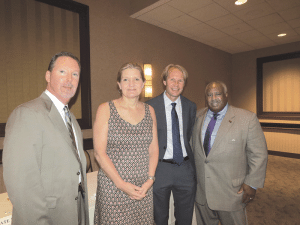 Kate Walsh, president of the Washington D.C.-based National Council of Teacher Quality, recently addressed Springfield Business Leaders for Education and others at the Naismith Memorial Basketball Hall of Fame regarding a first-ever national report on teacher preparation. The report, developed in partnership with U.S. News & World Report, evaluated more than 1,100 colleges and universities throughout the U.S. that educate and prepare elementary- and secondary-school teachers, including 35 within Massachusetts. A panel discussion followed the presentation. The panel included, from left, Tom O’Brien, human relations administrator for Springfield Public Schools; Walsh; Paul Hyry-Dermith, interim assistant superintendent, Holyoke Public Schools; and Henry Thomas, president of the Urban League of Springfield.
Kate Walsh, president of the Washington D.C.-based National Council of Teacher Quality, recently addressed Springfield Business Leaders for Education and others at the Naismith Memorial Basketball Hall of Fame regarding a first-ever national report on teacher preparation. The report, developed in partnership with U.S. News & World Report, evaluated more than 1,100 colleges and universities throughout the U.S. that educate and prepare elementary- and secondary-school teachers, including 35 within Massachusetts. A panel discussion followed the presentation. The panel included, from left, Tom O’Brien, human relations administrator for Springfield Public Schools; Walsh; Paul Hyry-Dermith, interim assistant superintendent, Holyoke Public Schools; and Henry Thomas, president of the Urban League of Springfield. Cooley Dickinson’s recent Closing Day marked the official start of the Northampton-based hospital’s system-wide affiliation with Massachusetts General Hospital. Pictured, CDH president and CEO Craig Melin, left, and Mass General President Dr. Peter Slavin sign off on the affiliation closing memorandum using telemedicine technology. The technology, already in place at Cooley Dickinson for telestroke and teleneurology consultations with Mass General physicians, is one way the affiliation will bring expanded services to the people of the Pioneer Valley. Noted Slavin, “Mass General and Cooley Dickinson have had a successful working relationship the past four years with the collaboration between the Mass General Cancer Center and Cooley Dickinson Cancer Care Program. We welcome the opportunity to build on that and other clinical services.”
Cooley Dickinson’s recent Closing Day marked the official start of the Northampton-based hospital’s system-wide affiliation with Massachusetts General Hospital. Pictured, CDH president and CEO Craig Melin, left, and Mass General President Dr. Peter Slavin sign off on the affiliation closing memorandum using telemedicine technology. The technology, already in place at Cooley Dickinson for telestroke and teleneurology consultations with Mass General physicians, is one way the affiliation will bring expanded services to the people of the Pioneer Valley. Noted Slavin, “Mass General and Cooley Dickinson have had a successful working relationship the past four years with the collaboration between the Mass General Cancer Center and Cooley Dickinson Cancer Care Program. We welcome the opportunity to build on that and other clinical services.”









